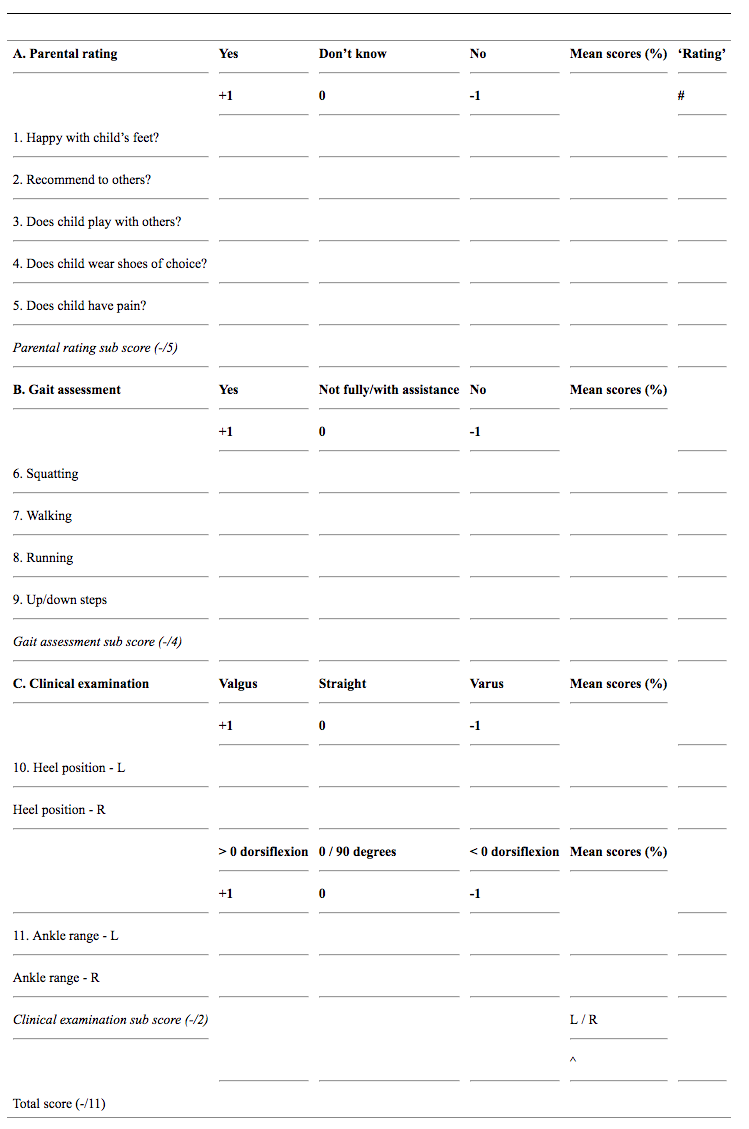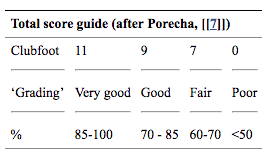Bangla Clubfoot Tool
Original Editor - Your name will be added here if you created the original content for this page.
Top Contributors - Kim Jackson, Rachael Lowe, Simisola Ajeyalemi, Olajumoke Ogunleye, Rucha Gadgil and Meaghan Rieke
Objective[edit | edit source]
The Bangla clubfoot tool[1] was developed to suit the context of the large Walk For Life clubfoot program in Bangladesh. It was largely developed from components of existing validated clubfoot assessment measures (such as the Roye Score), and adapted for local use. It is accurate, expedient, and inexpensive and has been shown to be a very reliable evaluation instrument[1].
Intended Population[edit | edit source]
This tool is used to assess outcomes for children with clubfoot in Bangladesh and may be a suitable measure to use across other lower and middle income settings. It is designed for use in busy clinics to assess results of clubfoot management in children of walking age, ie mid-term to longer-term results[1].
Method of Use[edit | edit source]
Three areas of examination are included: parent satisfaction, gait, clinical examination of the clubfoot[1].
The scoring system provides easily understood categories.
Reference[edit | edit source]
Evans AM, Perveen R, Ford-Powell VA, Barker S. The Bangla clubfoot tool: a repeatability study. Journal of foot and ankle research. 2014 May 6;7(1):27.
Evidence[edit | edit source]
Evans et al[1] demonstrated this simple tool to feature good reliability both within and between examiners.








